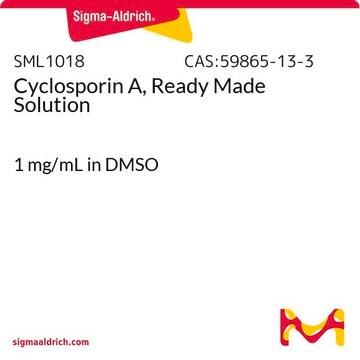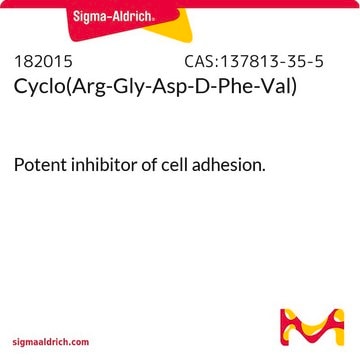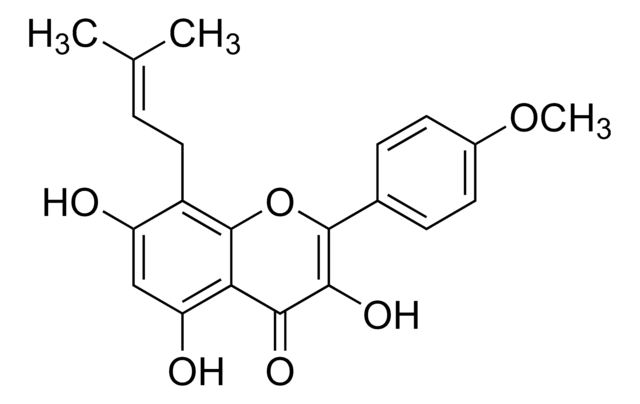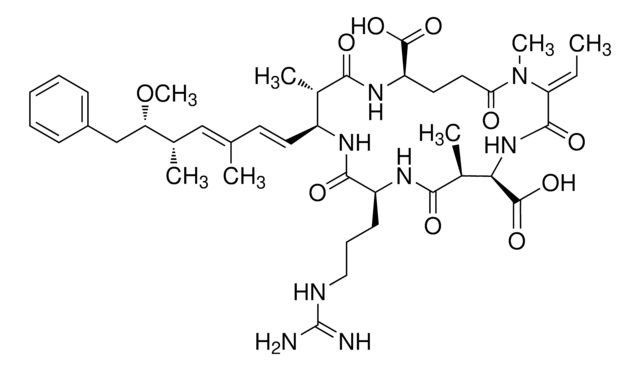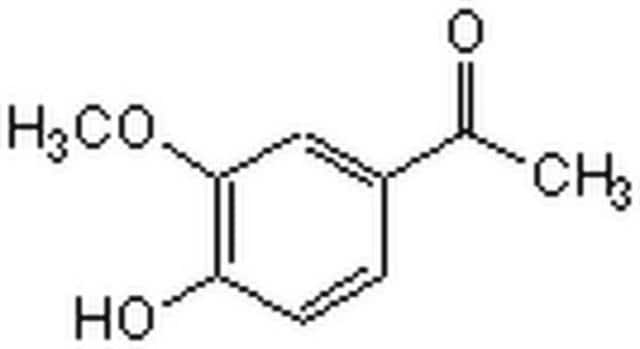SML1575
Cyclosporin H
≥97% (HPLC)
Synonym(s):
1,4,7,10,13,16,19,22,25,28,31-Undecaazacyclotritriacontane, cyclic peptide deriv, 5-(N-Methyl-D-valine)-Cyclosporin A
About This Item
Recommended Products
biological source
Tolypocladium inflatum
Quality Level
Assay
≥97% (HPLC)
form
powder
optical activity
[α]/D -100 to -115°, c = 0.5 in methanol
storage condition
desiccated
protect from light
color
white to beige
storage temp.
−20°C
InChI
1S/C63H113N11O12/c1-26-28-29-41(15)53(76)52-56(79)66-44(27-2)58(81)67(18)34-49(75)68(19)46(31-36(5)6)60(83)72(23)50(39(11)12)62(85)69(20)45(30-35(3)4)55(78)64-42(16)54(77)65-43(17)57(80)70(21)47(32-37(7)8)59(82)71(22)48(33-38(9)10)61(84)73(24)51(40(13)14)63(86)74(52)25/h26,28,35-48,50-53,76H,27,29-34H2,1-25H3,(H,64,78)(H,65,77)(H,66,79)/b28-26+/t41-,42+,43-,44+,45+,46+,47+,48+,50-,51+,52?,53-/m1/s1
InChI key
BQQHPBPTWWXRMU-SXHXJWHLSA-N
Application
- to pre-culture the lineage depleted murine Flt3ITDIDH2R140Q BM cells for transduction
- as a formyl peptide receptor (FPR) antagonist to study the role of FPR1 in calcium mobilization in polymorphonuclear leukocytes (PMNs)
- as one of the small molecules to study its effect on the homology-directed repair (HDR) editing efficiency in human-induced pluripotent stem cells (iPSCs) and T cells
Biochem/physiol Actions
Signal Word
Danger
Hazard Statements
Precautionary Statements
Hazard Classifications
Acute Tox. 4 Oral - Carc. 1B - Repr. 1B
Storage Class Code
6.1C - Combustible acute toxic Cat.3 / toxic compounds or compounds which causing chronic effects
WGK
WGK 3
Flash Point(F)
Not applicable
Flash Point(C)
Not applicable
Certificates of Analysis (COA)
Search for Certificates of Analysis (COA) by entering the products Lot/Batch Number. Lot and Batch Numbers can be found on a product’s label following the words ‘Lot’ or ‘Batch’.
Already Own This Product?
Find documentation for the products that you have recently purchased in the Document Library.
Customers Also Viewed
Our team of scientists has experience in all areas of research including Life Science, Material Science, Chemical Synthesis, Chromatography, Analytical and many others.
Contact Technical Service
